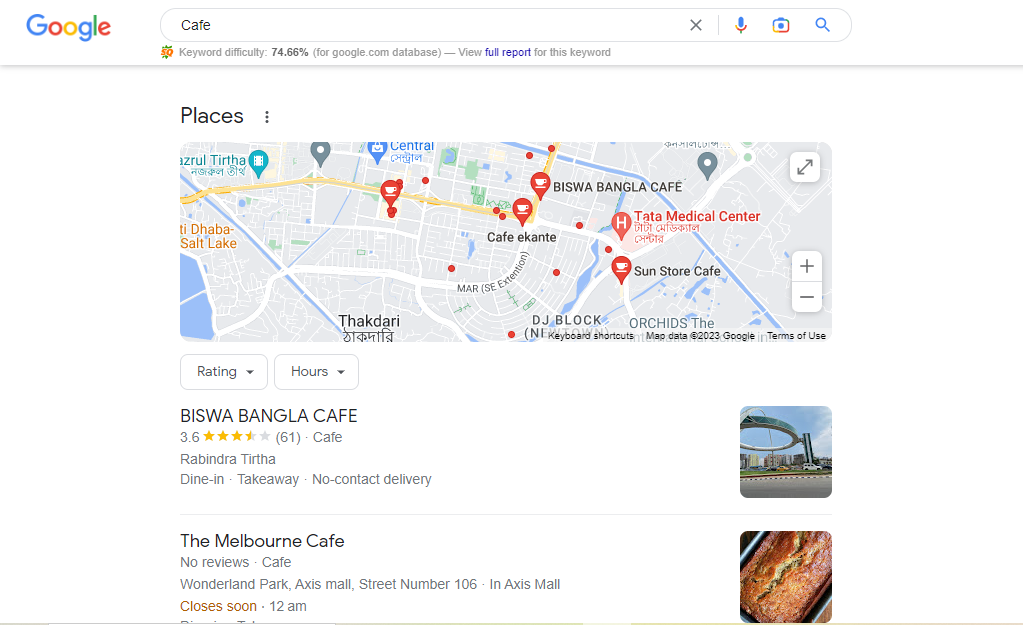In the current digital era, the prevalence of voice search has grown significantly, capturing the attention of users worldwide. With the advent of smart speakers, virtual assistants, and voice-activated search on mobile devices, optimizing your website for voice search has become a critical aspect of SEO. In this article, we will explore five ready-to-use SEO strategies that can help you rank faster and improve your visibility in voice search results.
Table of contents
- Introduction to Voice Search Optimization
- Understanding the Importance of Voice Search
- How does voice search differ from text search?
- Long-Tail Keywords and Conversational Phrases
- Featured Snippets and Position Zero
- Mobile Optimization and Fast Loading Speed
- Local SEO and Business Listings
- Natural Language Processing and User Intent
- Conclusion
- Frequently Asked Question (FAQs):
Related Article For You: SEO Trends to Watch Out for in 2023 Must Read.
Introduction to Voice Search Optimization
Voice search optimization refers to the process of optimizing your website and its content to enhance its visibility and relevance in voice-activated search results. As more and more users rely on voice assistants like Siri, Alexa, or Google Assistant to perform their online searches, businesses need to adapt their SEO strategies to accommodate this growing trend.
Understanding the Importance of Voice Search

Voice search has gained immense popularity due to its convenience and efficiency. It allows users to perform searches hands-free, using natural language and conversational queries. As a result, the way people search for information has changed significantly, and search engines have adapted to provide more accurate and relevant results.
How does voice search differ from text search?
If you have any involvement in the web industry, whether as a marketer, website owner, or SEO specialist, you are likely familiar with general SEO techniques that aid in achieving higher rankings in search results. However, you might be wondering why voice search necessitates its own optimization category.
Although there are areas of overlap between on-page search optimization and voice search optimization, there are distinct characteristics of voice search that set it apart from text-based searches on platforms like Google.com.
The primary distinction lies in the conversational nature of voice search queries compared to their text counterparts. Voice queries resemble natural conversations, mirroring how we speak in our daily lives. For instance, in a voice search, you might inquire, “What are some good spas near me?” In contrast, when performing a text search, the typical phrasing would be something like “men’s salon near me”.
As voice search gained prominence, search engines enhanced their ability to interpret longer, more conversational queries and generate relevant results. Google’s Hummingbird and BERT algorithm updates shifted the focus towards understanding searcher intent and deciphering the underlying meaning of queries, rather than merely analyzing individual keywords. This approach enables search engines to provide more accurate and suitable results for conversational voice queries.
Now, the responsibility falls on content creators to develop material that is deemed relevant to voice search users. The good news is that you don’t need to completely overhaul your existing SEO strategy to capture voice search traffic.
Here are the top 5 strategies which you can choose while doing Voice Search Optimization:
Long-Tail Keywords and Conversational Phrases
When optimizing for voice search, it’s crucial to focus on long-tail keywords and conversational phrases. Unlike traditional text-based searches, voice queries are more conversational and resemble how people speak in their everyday lives. Incorporating long-tail keywords and natural language into your content can help you capture these voice-based search queries effectively.
Featured Snippets and Position Zero
Featured snippets, also known as position zero, are concise, informative summaries displayed at the top of search engine results pages (SERPs). Voice search queries hold significant value, especially because voice assistants frequently read out the featured snippet as the response to the user’s inquiry. Structuring your content in a way that provides direct answers to commonly asked questions can increase your chances of being featured.
Mobile Optimization and Fast Loading Speed
Given that most voice searches occur on mobile devices, it is essential to optimize your website for mobile users. Mobile optimization includes responsive design, fast loading speed, and easy navigation. Mobile-friendly websites tend to rank higher in voice search results, ensuring that your content is easily accessible to voice search users.
Local SEO and Business Listings

Voice searches often have local intent, such as finding nearby restaurants or stores. Optimizing your website for local SEO can help you rank higher in voice search results for location-specific queries. Ensure that your business information is accurate and consistent across various online directories and listings.
It is already known that “near me” searches are commonly performed using voice commands. However, what determines our ranking for these searches is our Google Business Profile listing. A Google Business Profile serves to inform Google about the physical location of your business. When users ask Google to display similar businesses in a specific area, having a well-optimized profile increases the likelihood of your business ranking for that query.
To enhance your chances of ranking well, it is crucial to include important information such as your business name, address, and phone number (NAP) in your Google Business listing. Additionally, selecting the appropriate business categories and providing accurate area codes are vital steps. To make your business stand out, consider adding posts that feature special deals, news, or updates.
If you haven’t created a Google Business listing yet, it is highly recommended to do so without delay. By improving your local SEO efforts through an optimized profile, you can expect to see positive results promptly.
Another effective strategy to rank for “near me” searches is to target local keywords and strive for higher search rankings. Implementing structured data using Schema.org markup can significantly enhance your performance in search engines.
By incorporating these tactics into your SEO strategy, you can increase your visibility for location-specific searches and improve your overall online presence.
Natural Language Processing and User Intent
As voice search becomes more prevalent, search engines are placing greater emphasis on understanding user intent and delivering relevant results. To optimize for this, focus on creating content that addresses user queries comprehensively and incorporates natural language processing techniques. By aligning your content with user intent, you can enhance your chances of ranking well in voice search results.
One of the primary characteristics of a voice search query is its conversational nature, and it is essential for us to leverage this aspect. If our content sounds robotic or lacks natural language, our chances of appearing in voice search results diminish significantly.
Using natural language in our web content can provide substantial benefits. When we employ natural language, there is ample opportunity for matching verbal questions.
To truly understand how people ask questions verbally, it is crucial to grasp the searcher’s intent. By studying and anticipating the question style people use during voice searches, we can gain valuable insights.
Some important questions to consider are:
- What type of question keywords do people commonly use?
- How do they structure their conversational style?
- Which types of question set are most frequently asked?
- What type of answers are best related for these types of queries?
- Which answers are performing well and appearing as voice search results?
By obtaining data-driven insights that answer these questions, we can gain a better understanding of what people are looking for when they conduct voice searches. This knowledge allows us to tailor our content to meet their needs effectively.
Conclusion
Voice search optimization is no longer a choice but a necessity for businesses that want to stay ahead in the digital landscape. By implementing the five ready-to-use SEO strategies mentioned in this article – leveraging long-tail keywords, aiming for featured snippets, optimizing for mobile, focusing on local SEO, and aligning with user intent – you can improve your website’s visibility and rank faster in voice search results.
Frequently Asked Question (FAQs):
Q1. What is voice search optimization?
Voice search optimization entails optimizing your website and its content to enhance visibility and relevance in voice-activated search results.
Q2. Why is voice search important?
Voice search has become increasingly popular as it offers convenience and efficiency to users. It allows users to perform searches hands-free and in a conversational manner, changing the way people search for information.
Q3. How can I optimize for voice search?
You can optimize for voice search by incorporating long-tail keywords and conversational phrases, aiming for featured snippets, optimizing for mobile, focusing on local SEO, and aligning your content with user intent.
Q4. What are featured snippets?
Featured snippets, also known as position zero, are concise summaries displayed at the top of search engine results pages. They are often read out by voice assistants as the answer to user queries.
Q5. How can I optimize my website for local SEO?
To optimize your website for local SEO, ensure your business information is accurate and consistent across online directories and listings. Focus on location-specific keywords and create content that caters to local intent.

